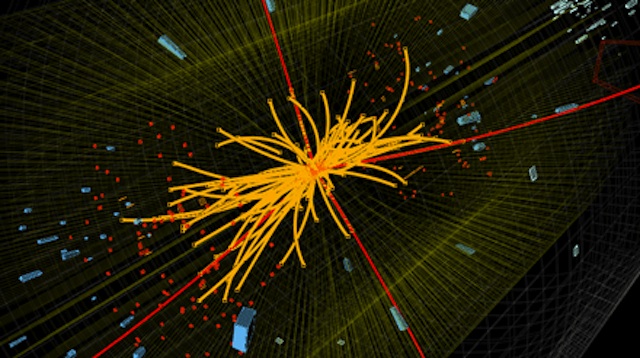SUMMARY
This is AI generated summarization, which may have errors. For context, always refer to the full article.

PARIS, France – New data unveiled on Thursday, March 14, strengthens the belief that a subatomic particle discovered in 2012 is the elusive Higgs boson, European physicists said.
Analysis of two characteristics, teased from experiments at the world’s biggest particle smasher, aligns with theories that the discovery is a Higgs, the European Organisation for Nuclear Research (CERN) said.
“The preliminary results with the full 2012 data set are magnificent and to me it is clear that we are dealing with a Higgs boson, though we still have a long way to go to know what kind of Higgs boson it is,” said Joe Incandela, spokesman for the CMS experiment at CERN’s Large Hadron Collider (LHC).
The data was presented at the Moriond Conference in La Thuile, Italy — a gathering where physicists have been poring over several aspects of their historic find.
In theory, a Higgs boson should have zero “spin,” a measure of momentum.
And “parity” — a measure of how its mirror image behaves in quantum physics — should be positive.
Having analysed mountains of data, scientists at the CMS and ATLAS experiments said they had scrutinised different options for the new particle.
“These all prefer no spin and positive parity,” CERN said a statement from Geneva.
“This, coupled with the measured interactions of the new particle with other particles, strongly indicates that it is a Higgs boson,” it said.
Further analysis is necessary, however, to confirm that this is the Higgs boson postulated in the Standard Model of particle physics, or whether it is some other type.
Finding the Higgs would fill a massive gap in the Standard Model, which describes the forces, particles and interactions that comprise the Universe.
In theory, the Higgs exists as an invisible field, interacting with other particles to provide them mass. Without it, humans and all other joined-up atoms in the Universe would not exist.
Last July, scientists said they confident they had found the particle but cautioned on the need for further analysis. Two-and-a-half times more data has by now been scrutinised, said CERN.
The LHC, straddling the border between Switzerland and France, shut down last month for a two-year revamp. – Rappler.com
Add a comment
How does this make you feel?
There are no comments yet. Add your comment to start the conversation.